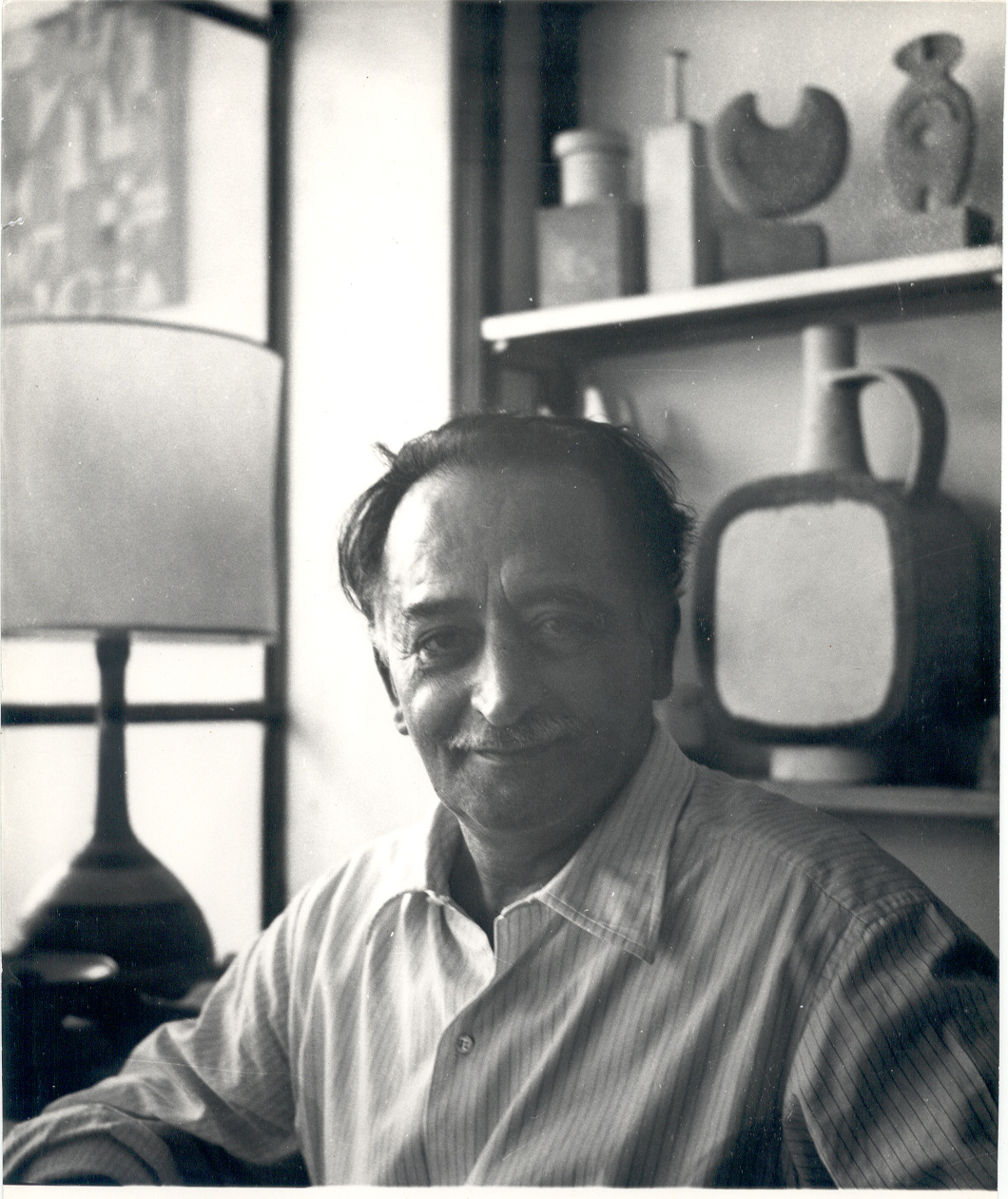Guido Gambone was born in Montella Irpinia (Avellino) on June 27, 1909. His father Gaetano, together with his wife Teresa Volpe and their children, moved to Vietri sul Mare. At the age of fifteen, he dropped out of high school and became an apprentice at Francesco (“don Ciccio”) Avallone’s ceramics factory. At the time, Vietri’s profession of ceramic production was going through what is called the “German era,” named for the new life that northern European artists—such as Richard Dölker, Irene Kowaliska, and Günter Stüdeman—had breathed into the local ceramic-making tradition. The young Gambone was influenced by this new innovative spirit. In spite of having been in a serious car accident in 1933 that led to the amputation of one of his legs, Guido Gambone continued to work in the field of ceramics, collaborating with the Industria Ceramica Salernitana (ICS) factory owned by Max Melamerson. In the mid-30s, Melamerson became the artistic director at ICS, stepping into the role Richard Dölker had previously filled. In 1936, Gambone was sent to Florence with brothers Vincenzo and Salvatore Procida and Vincenzo Solimene to work in the Cantagalli factory, which was run by Max Melamerson at the time. He returned to Vietri in 1939 and continued his collaboration with the German entrepreneur whose factory had changed its name to Manifattura Artistica Ceramica Salernitana (MACS). After the war, he opened a factory with his brother Remigio, Andrea D’Arienzo, and Ugo De Feo, called La Faenzerella. Here Gambone, beyond his continued production of pieces influenced by local tradition and the “German era,” was able to find success with his own experimental works. In 1950, he definitively moved to Florence with Andrea D’Arienzo and Salvatore Procida and founded the workshop Ceramiche Gambone, first located on Via Palazzo dei Diavoli and later on Via Benedetto Marcello. Slowly the Vietrese repertoire began to disappear in favor of completely new proposals characterized by true originality. In the mid-50s, he began to show an interest in stoneware, of which he created high-quality pieces. This was also the start of a very important time for him in terms of exhibitions and participation in competitions. We must not forget his assiduous presence at the Mostra Mercato dell’Artigianato in Florence from the 1940s to the 1960s.
Here is a list of the main events in which he participated and the prizes he won:
1950, XXV International Art Exhibition of Venice’s Biennale; 1951, Personal Exhibition at Il Milione Gallery; 1948, Concorso della Ceramica di Faenza (Faenza Prize); 1949 (Faenza Prize ex aequo); 1954 (Ballardini Prize); 1959 (Faenza Prize); 1960 (Faenza Prize and Gold Medal); 1961 (Prize from the Ente Autonomo Mostra Mercato Nazionale dell’Artigianato in Florence); 1962 (Gold Medal from the President of the Republic); 1966, 1967 (Prize from the Ente Provinciale per il Turismo in Ravenna). He participated in various editions of the Milan Triennale: 1951 (Honor Diploma); 1954 (Honor Diploma); 1957, Personal Exhibition (Collaboration Diploma); 1969 Gubbio, Bienniale della Ceramica (Gold Medal); 1962 Gualdo Tadino, Concorso della Ceramica (First Prize ex aequo); 1963 Cervia, Concorso Ceramica d’Arte Moderna (Cervia City Prize; 1964 Honor Diploma and ex aequo prize from the Azienda di Soggiorno); 1967 (Honor Plaque and Prize).
Among the numerous exhibitions abroad are: 1951, New York, Italy at Work: Mostra dell’Artigianato Italiano; 1952 and 1956, Paris, Art Décoratif Italien, Galerie de l’Orfèvrerie Christofle; 1954, Zurich, Forme Nuove in Italia; 1955, London, Italian Contemporary Handicrafts; 1961, Copenhagen, Oslo, and Stockholm, Mostra d’arte contemporanea italiana; 1967, Amsterdam, Nieuwe Italiaanse Vormgeving.
Guido Gambone died in Florence on September 20, 1969.

